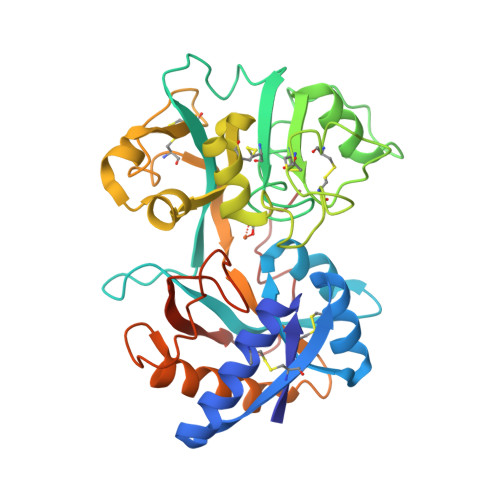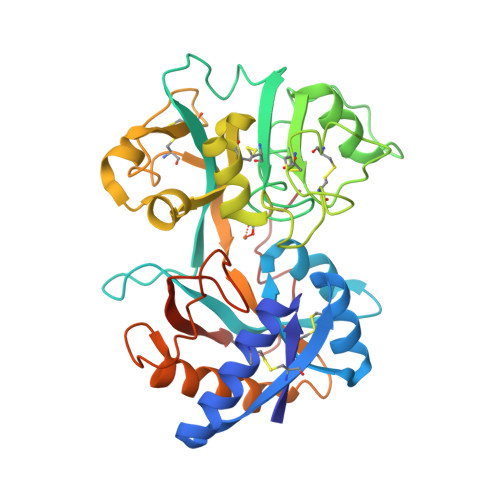Mutation of arginine 121 in lactoferrin destabilizes iron binding by disruption of anion binding: crystal structures of R121S and R121E mutants.
Faber, H.R., Baker, C.J., Day, C.L., Tweedie, J.W., Baker, E.N.(1996) Biochemistry 35: 14473-14479
- PubMed: 8931543
- DOI: https://doi.org/10.1021/bi961729g
- Primary Citation of Related Structures:
1VFD, 1VFE - PubMed Abstract:
A conserved arginine residue helps to form the synergistic anion binding site in transferrins. To probe the importance of this residue for anion binding and iron binding, Arg 121 has been mutated to Ser and Glu in N-terminal half-molecule of human lactoferrin. The two mutants, R121S and R121E, have been expressed, purified, and crystallized. Their three-dimensional structures have been determined by X-ray diffraction at 2.3 and 2.5 A resolution, respectively. The structures were determined by molecular replacement and were refined by restrained least squares methods to final R values of 0.185 and 0.204. Both mutants still bind iron but with decreased stability. The crystal structures show that destabilization of iron binding probably results from disruption of the anion binding site; mutation of Arg 121 removes one wall of the anion binding pocket and causes the synergistic carbonate ion to be displaced 0.5 A from its position in the wild-type protein. In the process it becomes partially detached from the helix N-terminus that forms the rest of the anion binding site.
Organizational Affiliation:
Department of Biochemistry, Massey University, Palmerston North, New Zealand.


















